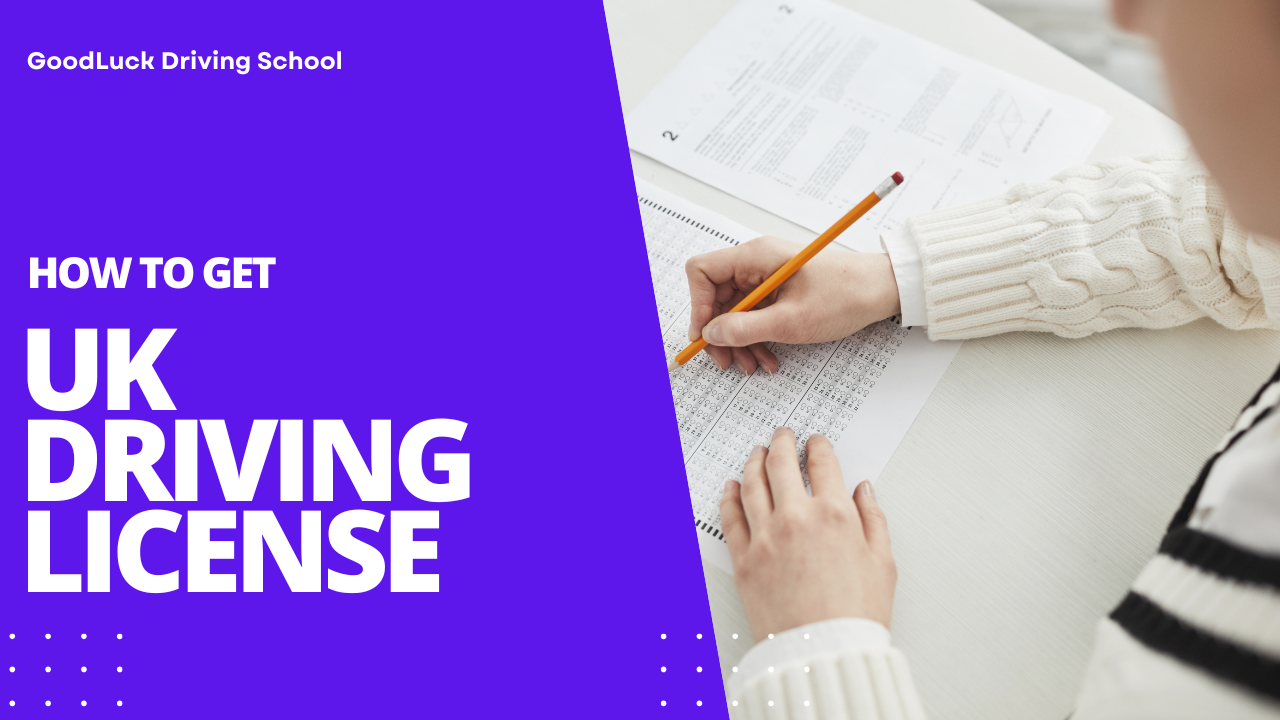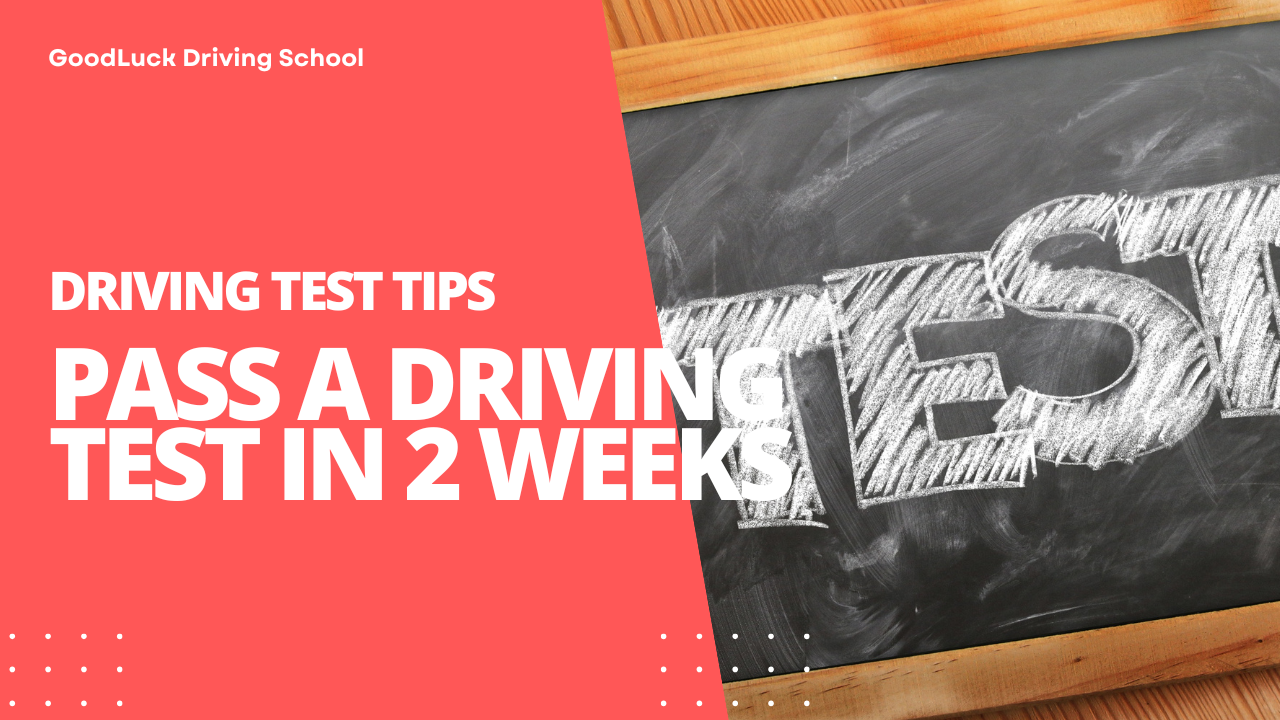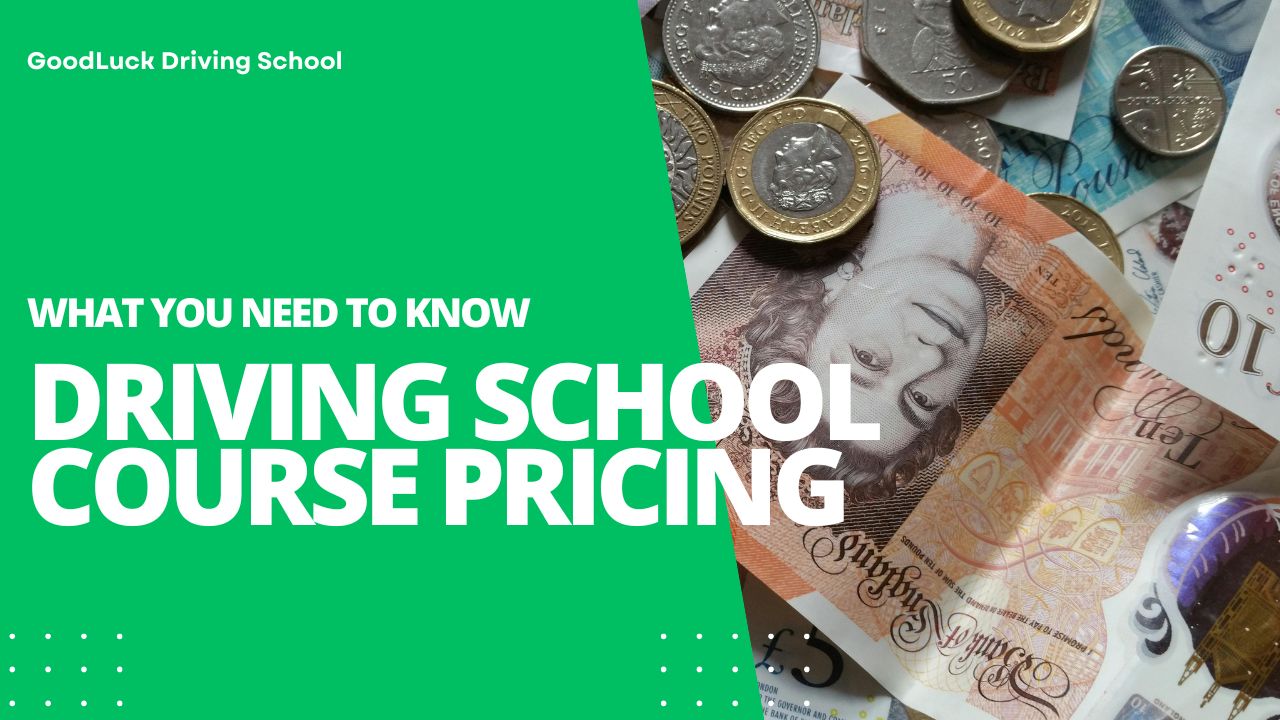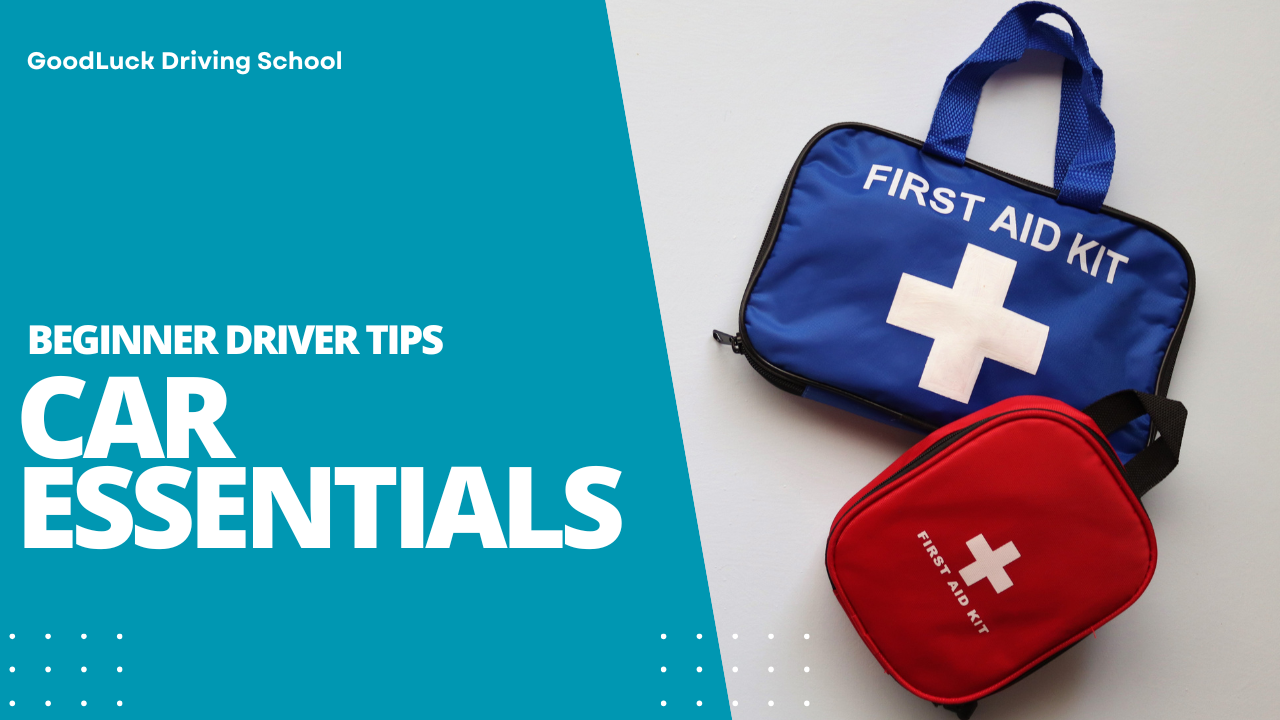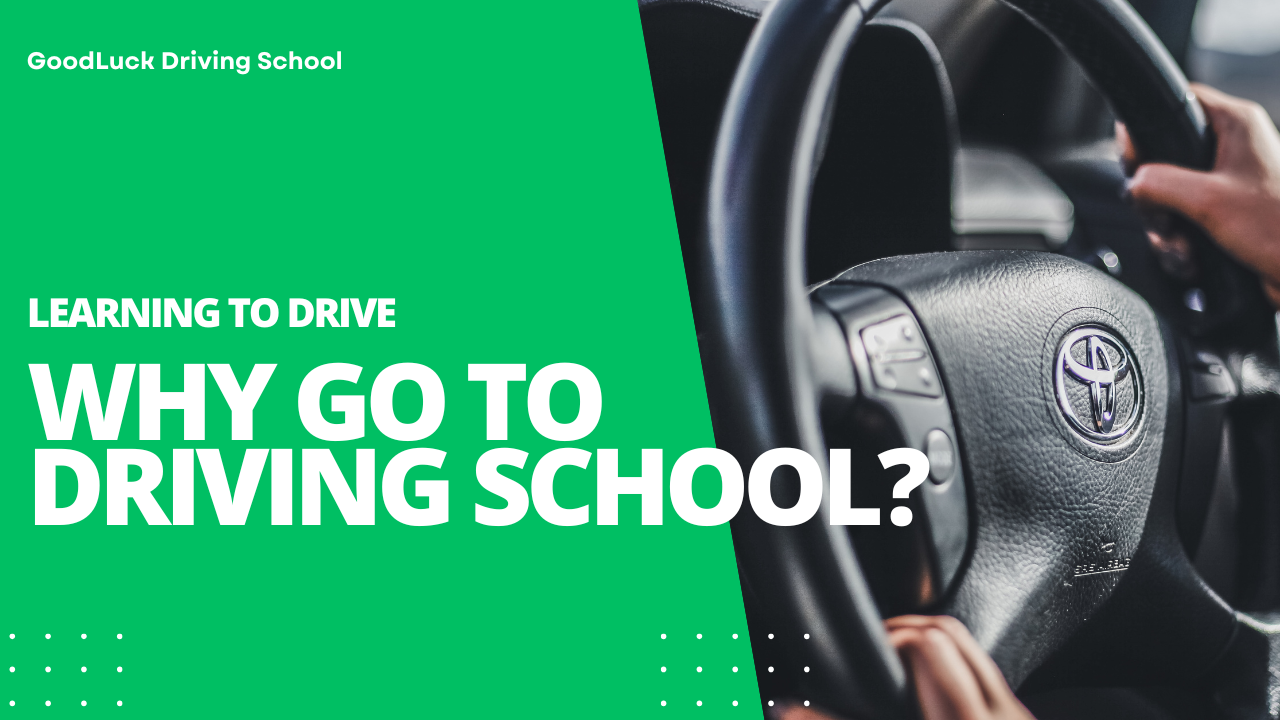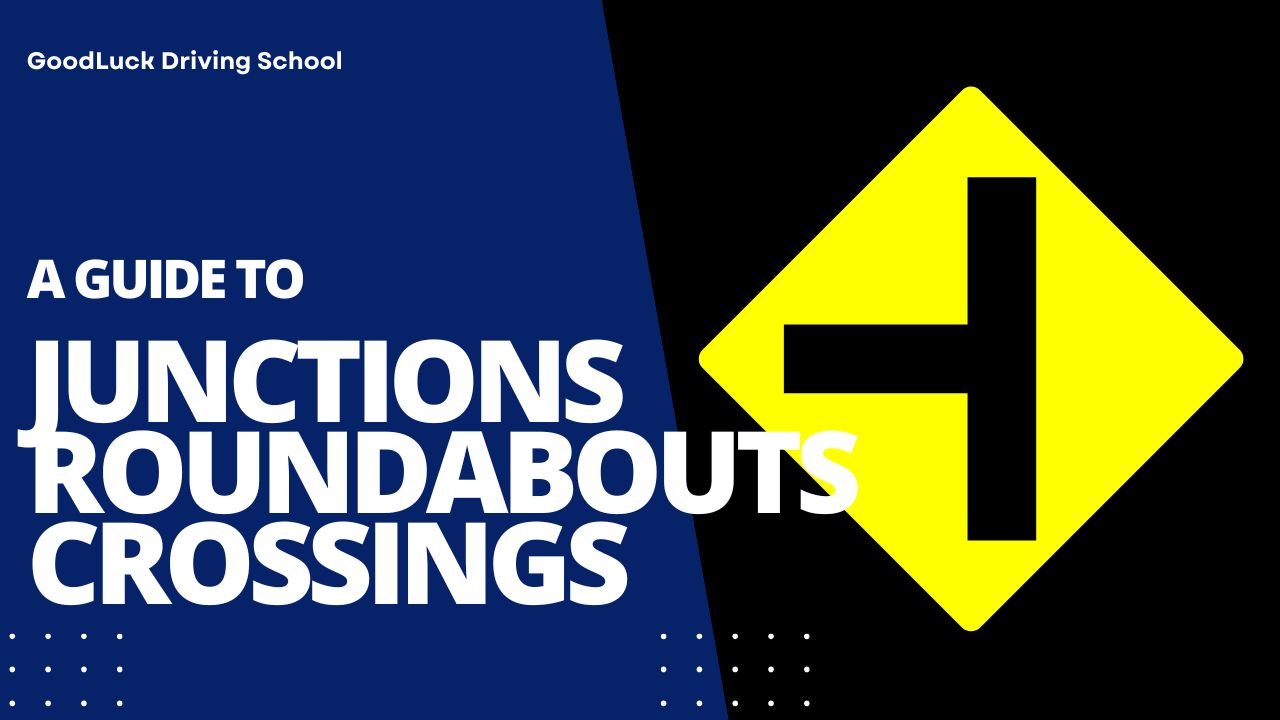
Guide to Junctions, Roundabouts and Crossing
Junctions are everywhere and yet they are often the most confusing part of driving for beginners.
Whether you’re learning to drive or just want to brush up on your knowledge, mastering junctions, roundabouts and crossings are key to becoming a confident driver.
In fact, did you know that in the UK, over 30% of fatalities occur at or within 20m of junctions and 3% at roundabouts.
What is a Junction?
In simple terms, a junction is where two or more roads meet. These can come in many shapes and sizes: crossroads, T-junctions, roundabouts, or even staggered junctions where the roads don’t line up perfectly.
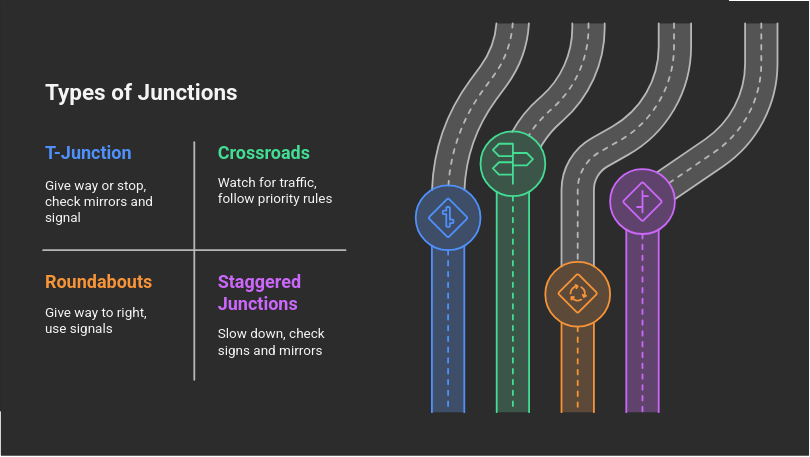
The Big 4 Junctions You’ll Need to Know
1️⃣ T-Junction: A T-junction is shaped like the letter T. It’s where one road meets another at a right angle, usually forming a stop or give-way situation.
Safety Tip: If you’re coming from the top of the T, you must give way or stop if required. Check your mirrors, signal, and look for any vehicles or pedestrians before pulling out.
2️⃣ Crossroads: Crossroads involve two roads that meet at right angles, but this time, you might be driving straight through or turning left or right.
Safety Tip: Watch out for traffic from all directions, especially when you’re turning right. Remember, priority rules apply here, and the road you’re on might have priority or not.
3️⃣ Roundabouts: Roundabouts exist in large amounts in the UK. Roundabouts are meant to keep traffic moving and reduce accident, but they are still confusing to new drivers.
Safety Tip: Always give way to traffic coming from the right unless signs say otherwise. Use your signals properly to let other drivers know your intentions.
4️⃣ Staggered Junctions: These junctions involve two roads that don’t line up directly. You’ll have to make a slight detour to get to the other side, and this can be a little trickier to navigate.
Safety Tip: Take it slow, look carefully for any signs indicating give-way or stop rules, and always check your mirrors before pulling out.
How to Approach any Junction?
While every junction has its own quirks, one thing remains constant: you’ve got to be alert.
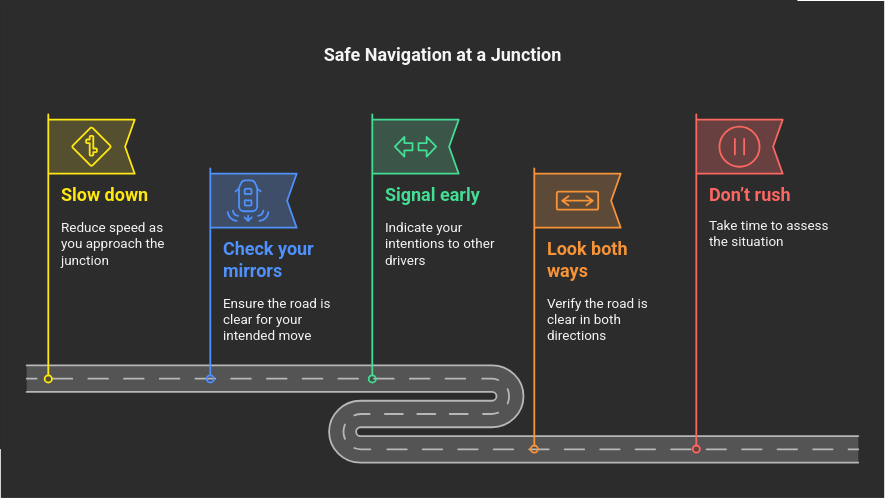
Here’s a quick checklist you can follow:
- Slow down: Always slow down as you reach an intersection.
- Check your mirrors: Look at what’s behind you, and ensure the road is clear for your intended move.
- Signal early: Signal about the turns you are ready to make. Let other drivers behind you know what turn you are planning to make next.
- Look both ways: Whenever on the road, never assume other drivers will follow the rules. Your safety is in your hands.
- Don’t rush: Take your time to calculate the situation. A few extra seconds could save a lot of stress (or worse).
Conclusion
Being skilled at junctions is all about judging what is in front of you, being alert, and following the UK driving rules. Over time, these rules will become second nature.
If you’re a learning to drive or practicing driving to improve your driving skills in different conditions, and you’ll soon see that junctions are totally manageable.
FAQ
Q1. What is the difference between a junction and a crossroads?
A junction is where two or more roads intersect.
A crossroads is also a junction at which two roadways meet at right angles.
Q2. Who has the right of way at a roundabout?
Cars coming from the right have the right of way in the UK.
When you reach a roundabout, you must wait and let the cars already moving in the circle go first.
Q3. How do I safely turn at a T-junction?
Follow these steps:
1. Slow down as come near to junction.
2. Check both ways for cars and people.
3. Signal to let others know your direction.
4. Only move when it’s safe
Q4. Why are staggered junctions tricky?
In a staggered junction, roads don’t line up exactly across from each other.
So, instead of driving straight through, you might need to turn left or right first, then continue forward.
Q5. What are common mistakes new drivers make at junctions?
- Not checking both ways properly before turning.
- Forgetting to signal can confuse other drivers about your next turn.
- If you have right of way, stopping in middle can cause confusion in others and delays.
- Going too fast through the junction instead of being cautious.
OR CALL US AT

